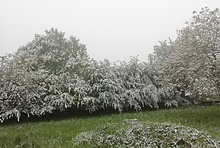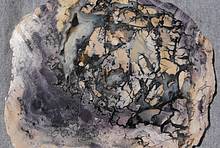Home PageAbout MindatThe Mindat ManualHistory of MindatCopyright StatusWho We AreContact UsAdvertise on Mindat
Donate to MindatCorporate SponsorshipSponsor a PageSponsored PagesMindat AdvertisersAdvertise on Mindat
Learning CenterWhat is a mineral?The most common minerals on earthInformation for EducatorsMindat ArticlesThe ElementsThe Rock H. Currier Digital LibraryGeologic Time
Minerals by PropertiesMinerals by ChemistryAdvanced Locality SearchRandom MineralRandom LocalitySearch by minIDLocalities Near MeSearch ArticlesSearch GlossaryMore Search Options
The Mindat ManualAdd a New PhotoRate PhotosLocality Edit ReportCoordinate Completion ReportAdd Glossary Item
Mining CompaniesStatisticsUsersMineral MuseumsClubs & OrganizationsMineral Shows & EventsThe Mindat DirectoryDevice SettingsThe Mineral Quiz
Photo SearchPhoto GalleriesSearch by ColorNew Photos TodayNew Photos YesterdayMembers' Photo GalleriesPast Photo of the Day GalleryPhotography
╳Discussions
💬 Home🔎 Search📅 LatestGroups
EducationOpen discussion area.Fakes & FraudsOpen discussion area.Field CollectingOpen discussion area.FossilsOpen discussion area.Gems and GemologyOpen discussion area.GeneralOpen discussion area.How to ContributeOpen discussion area.Identity HelpOpen discussion area.Improving Mindat.orgOpen discussion area.LocalitiesOpen discussion area.Lost and Stolen SpecimensOpen discussion area.MarketplaceOpen discussion area.MeteoritesOpen discussion area.Mindat ProductsOpen discussion area.Mineral ExchangesOpen discussion area.Mineral PhotographyOpen discussion area.Mineral ShowsOpen discussion area.Mineralogical ClassificationOpen discussion area.Mineralogy CourseOpen discussion area.MineralsOpen discussion area.Minerals and MuseumsOpen discussion area.PhotosOpen discussion area.Techniques for CollectorsOpen discussion area.The Rock H. Currier Digital LibraryOpen discussion area.UV MineralsOpen discussion area.Recent Images in Discussions
Mineralogical ClassificationJianshuiite; Rietveld refinement
3rd Feb 2016 05:31 UTCMarco E. Ciriotti Manager
▪ Post, J.E., Thomas, E., Heaney, P.J. (2016): Jianshuiite in oceanic manganese nodules at the Paleocene-Eocene Boundary. American Mineralogist, 101, 407-414.
Abstract:
Synchrotron powder X-ray diffraction and scanning electron microscopy examinations of manganese oxide concretions/nodules (~0.3–1.0 mm diameter) from ODP Site 1262 on Walvis Ridge in the Southeastern Atlantic Ocean revealed that they consist primarily of the layered Mn oxide phase jianshuiite [(Mg,Mn,Ca)Mn34+O7·3H2O]. The nodules are from an interval with severe carbonate dissolution that represents the Paleocene/Eocene (P/E) thermal maximum (~55.8 Ma). Most nodules from the middle of the carbonate dissolution interval contain internal open space, and consist almost entirely of euhedral plate-like jianshuiite crystals, 2–4 μm in diameter and ~0.1–0.5 μm thick. Backscattered electron images and energy-dispersive X-ray analyses revealed stacks of interleaved Al-rich and Al-poor jianshuiite crystals in some nodules. The crystals in other nodules contain predominantly Mg (with trace K and Al) in addition to Mn and O, making them near “end-member” jianshuiite. Rietveld refinements in space group R3̄ confirmed the isostructural relationship between jianshuiite and chalcophanite, with Mg occupying the interlayer position above and below the vacant sites in the Mn/O octahedral sheet, and coordinated to 3 octahedral layer O atoms (1.94 Å) and 3 interlayer water O atoms (2.13 Å). Final refined occupancy factors suggest that small quantities of Ni and possibly Mn2+ are located on the Mg site. The transient appearance of the Mg-rich birnessite-like phase jianshuiite, probably abiotically produced, must indicate an exceptional transient change in the chemistry of the pore fluids within deep ocean sediments directly following the P/E boundary, possibly as a result of decreasing oxygen levels and pH, followed by a return to pre-event conditions.
NB: Crystal structure solved for the first time.
4th Feb 2016 10:35 UTCUwe Kolitsch Manager




Mindat.org is an outreach project of the Hudson Institute of Mineralogy, a 501(c)(3) not-for-profit organization.
Copyright © mindat.org and the Hudson Institute of Mineralogy 1993-2024, except where stated. Most political location boundaries are © OpenStreetMap contributors. Mindat.org relies on the contributions of thousands of members and supporters. Founded in 2000 by Jolyon Ralph.
Privacy Policy - Terms & Conditions - Contact Us / DMCA issues - Report a bug/vulnerability Current server date and time: April 23, 2024 23:33:10
Copyright © mindat.org and the Hudson Institute of Mineralogy 1993-2024, except where stated. Most political location boundaries are © OpenStreetMap contributors. Mindat.org relies on the contributions of thousands of members and supporters. Founded in 2000 by Jolyon Ralph.
Privacy Policy - Terms & Conditions - Contact Us / DMCA issues - Report a bug/vulnerability Current server date and time: April 23, 2024 23:33:10











